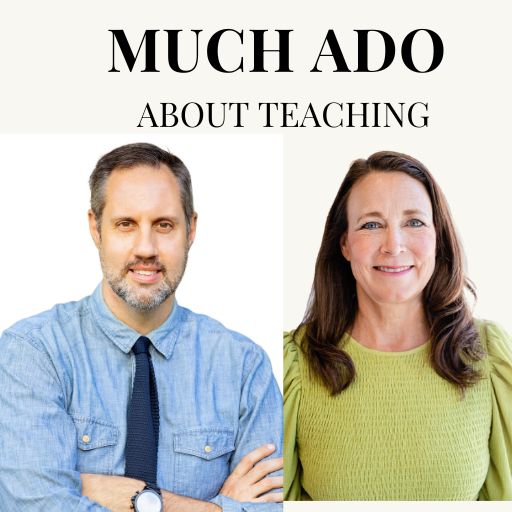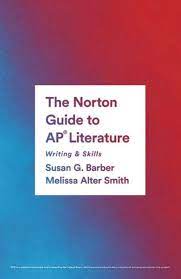How do you get students to identify and write lines of reasoning? — Kendra M.
Susan: I am often my own worst enemy in teaching line or reasoning because I tend to overcomplicate the concept; line of reasoning is simply an order to an argument. I love the analogy David Miller uses to explain a line of reasoning. He equates it to a string of lights like on a Christmas tree. Each bulb is a burst of light on its own yet are all connected as opposed to bursts of insights with no connection. Transitions are also key in teaching a line of reasoning. While transitions do not guarantee a strong LOR, identifying transitions helps students think through the progression of ideas which is key in establishing a line of reasoning. This chart from They Say/I Say: The Moves That Matter in Academic Writing (Norton) is one I often have up while students are writing for easy reference.

Finally, I cannot stress enough taking time to outline before writing in order to establish a clear order to an argument. Before writing, we spend time looking at samples and outlining the line of reasoning which in turn helps students compose their own outlines for writing. We looked at this sample on The Awakening in class for the gift prompt (2018) which was broken down into a basic compare/contrast format – Edna’s independence serves as a means of independence yet also makes her vulnerable. The student then wrote a paragraph on how both of these highlight the oppression of women during that time period. Then I showed them how the argument in the last paragraph could be embedded in the first two paragraphs which could position a student to earn the sophistication point. Taking time to talk through LOR and have students outline their LOR (even if primitive like this) will prove beneficial.
Brian: An easy way to teach it is to use my 50 Subjects in Literature Worksheet.
For any text, have students pick three topics that the text addresses. For example, Li Young Lee’s poem “A Story” appeared as the Q1 on 2011 AP Lit exam. Using that poem, a student may pick #19 guilt/shame, #14 fate, and #44 stages of life. Those now become three lines of reasoning for three body paragraphs. Once these ideas are established, students need to pull quotes that reveal these subjects. Then they need to identify the devices that enhance these subjects. Finally, they need to provide commentary on how these subjects are complex or complicated in the poem.
This becomes achievable for students to grasp and execute.
All they need to do to establish a line of reasoning is:
- Identify a subject
- find the quotes that relate to the subject
- identify the devices that enhance the subject
- provide commentary on the subject
The key element is to not summarize the evidence. The goal is not to prove that guilt and shame exist in the poem. That is too superficial a reading of it. The challenge is to see more than one side of the issue.
I’m struggling teaching AP Literature on block schedule. After winter break, I won’t see my kids next semester at all before the exam in the spring. What should I put in a review folder? — Erika S
Susan: I’ve only taught AP Lit this way once, and what a challenge! This AP Lit Review Choice Board by Brian Hannon is built around choice so students can work on what they need, visually appealing, and comprehensive and is what I would provide for my students. I also offered four 1 hour review sessions after school for fall and spring students centered on each component of the exam when I taught on block, and those were helpful in the sense that I was able to build confidence and give assurance as much as review content.

Brian: Certainly, the AP Daily videos are a comprehensive review that you can assign.
If you are looking for something more compact, I wrote 8 Things Every Student Should Know for the AP Lit Exam a few years back and it has been one of our most successful posts. It gets to the heart of success without being filled with tons of jargon.
What priority should you / would you give vocabulary study in the average AP Lit classroom? — Blake T.
Susan: Here’s my honest answer: Outside of some tone words, I don’t do any vocabulary instruction. This is an area of weakness that I need to address and am just not sure how to from both a pedagogical and time perspective. I’m hoping Brian has a good answer here.
Brian: Blake, I love that your question included the hypothetical. I should do more vocabulary instruction in a systematic way. I once read that the single biggest predictor of academic success is one’s vocabulary level. Makes sense. Greater comprehension correlates to greater understanding.
My instruction is organic and in context. I am trying to model the joy that comes from unlocking a word in a poem or passage, creating new understandings. My school has vocabulary.com, which I use in my SAT class in a systemic way, but I don’t know how much joy there is for my students in completing its assignments.
How do you work in more writing, but less grading? — Tiffany S.
Susan: I let my students know early on that I don’t grade everything and then I fight the temptation to grade everything. Here are a few things that work for me. 1 – Students often self-assess and write a short reflection of their self-assessment for me; this saves me time and also allows students to have more ownership over their work. 2 – On timed essays, I provide row by row rubric numbers with very little commentary. I also remind myself that rubric numbers are feedback; this is worth repeating – rubric numbers are feedback. Students can pull the rubric and look at commentary in the rubric along with the scoring notes for AP rubrics; this is feedback! 3 – Here are two templates for quick feedback:



4 – Writing conferences have also been a game changer for me because I can give far more feedback verbally and can better understand a student’s thought process in writing. 5 – Students have writers notebooks that we use at least a couple of times a week for working on sentence structure and style or writing quick responses to literature. These notebooks stay in class. These daily writing activities add up to a lot of writing practice throughout the year and can be spot checked for a completion grade really quickly or not graded at all.
Brian: Your question hits an expectation that really bothers me. English teachers have to commit themselves to a career of martyrdom, filled with long hours, late nights, and weekends sacrificed at the alter of red pens.
I’ve always tried to create a classroom environment where the experience of learning is more important than the number on an assignment. One way I’ve been able to achieve this is by doing exactly what you’ve said, have students write more, but grade less.
For more examples on how I do this, check out Turn Every Student Into a Writer, and Comments Are a Bad Idea.
How do you get students to actively do assigned novel studies? — Tracie S.
Susan:

I give students time to read in class which helps so much. I’ve also found than chunking out a novel and giving to my students at the very beginning is helpful for students to plan. I also try to plan creative activities throughout as apposed to reading quizzes for reading check-ins. These can include creating memes on the assigned reading, writing a scene from a different character’s point of view, or creating a playlist for a character to go with reading.
Brian: My sweet spot is 3-4 weeks on any unit. Anything less feels rushed. Anything more than four weeks feels like I am dragging it out.
I always chunk the reading into sections and assess first, discuss second. I don;t want to assess them on their ability to repeat what I say in class or what their classmates think. Instead, I value their original thinking. What does this look like? With Pride and Prejudice we read the first two chapters together as a class, then the students had a week to finish the first section. Once I quiz them, then we go back and dive into that section, doing close readings, character charts, etc.
My students aren’t independently reading, any solutions? — Aliyah C.
Susan: Choice, choice, and choice.
Brian: Carve out a little time each day in class for them to read. 10 minutes each day in class may be the momentum they need to continue reading at home.
What is the “one” text (novel/play/poetry/short story) that is a MUST teach for you? — Shelley B.
Susan: Frankenstein which I’m actually not teaching this year (HA) and Counting Descent (did this in September).
Brian: “Cathedral” by Raymond Carver
Help! I’ve never been successful at finding a healthy balance between analyzing texts and practicing multiple choice in class. What can you successfully look like in a sequence in a unit? — Jennifer F.
Susan: We just finished our first semester of instruction yesterday, and we have only done one passage for MC practice. That happened last week at the end of our sonnet unit when we read “November Cotton Flower” during class then students worked on MC in small groups. (You can see my lesson here). I am a firm believer that if we spend time honing our close reading skills, a lot of multiple choice takes care of itself. We will increasingly practice more during the spring especially during February and March mostly on Mondays which is the day when I see all of my students for 40 minutes. I spend time reviewing strategies then providing students opportunities to practice the strategies in class. I’ll also open all of the Unit Progress Checks in AP Classroom for students who want/need extra practice.
Brian: I don’t start multiple choice practice until late January, but then it becomes a once a week activity. By the time we get to the exam, my students will have completed three, full length, multiple-choice portions of the exam. That seems about right for me — 165 practice questions. I also release one more exam on AP Classroom if they would like more practice.













One comment
Kate M
Brian—
Can you share your reading schedule for Pride and Prejudice? I love the ideas here (including the journals) and plan to teach it for the first time after winter break.
Thanks!